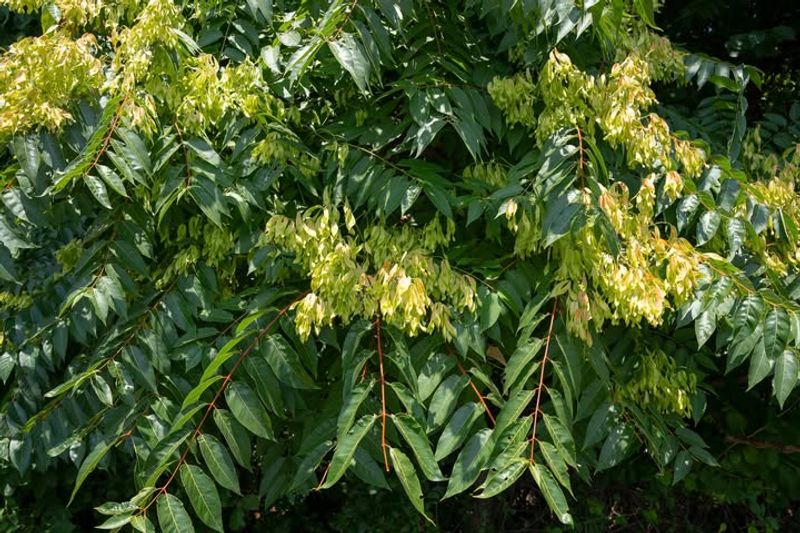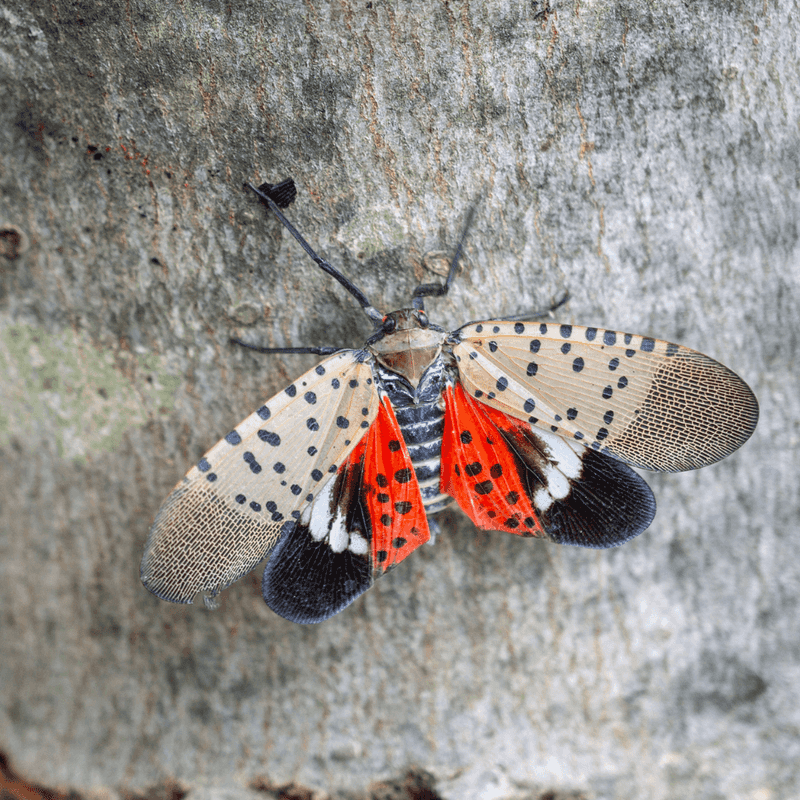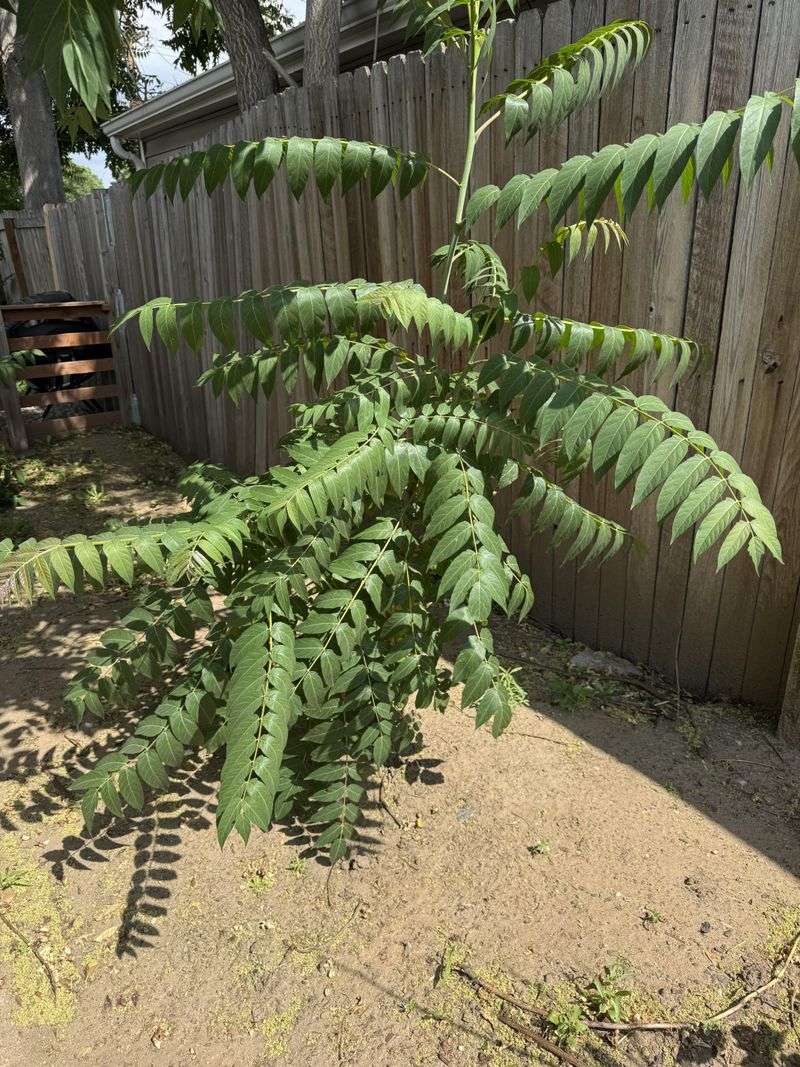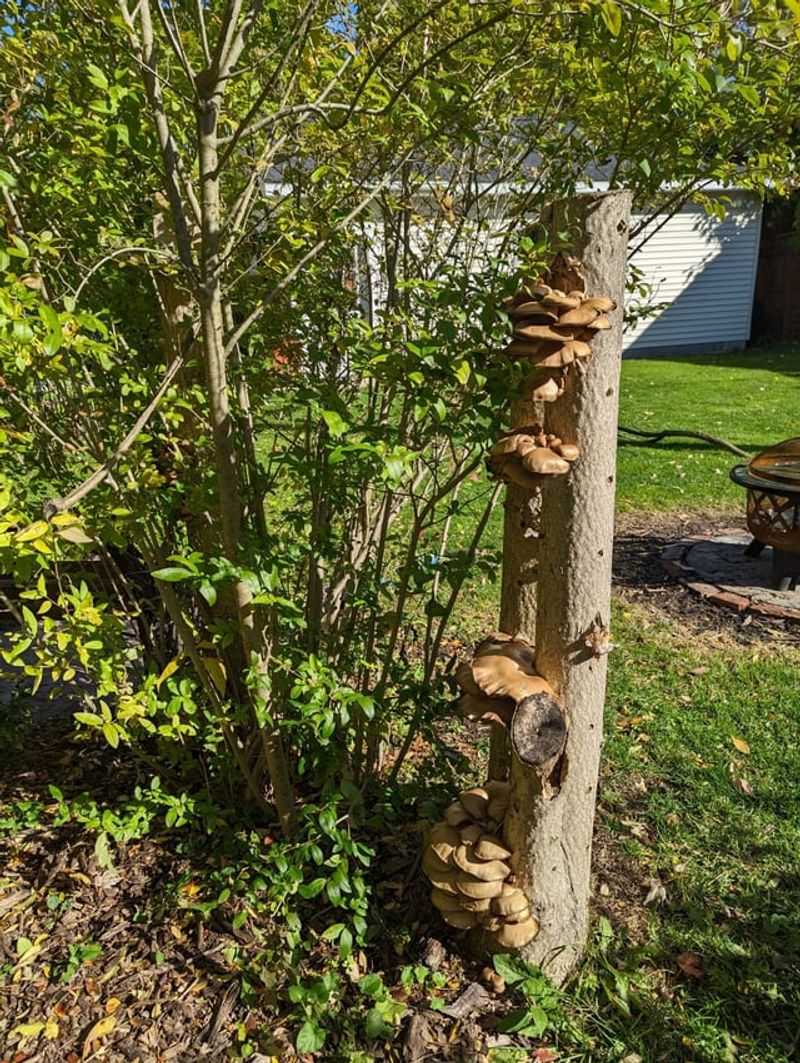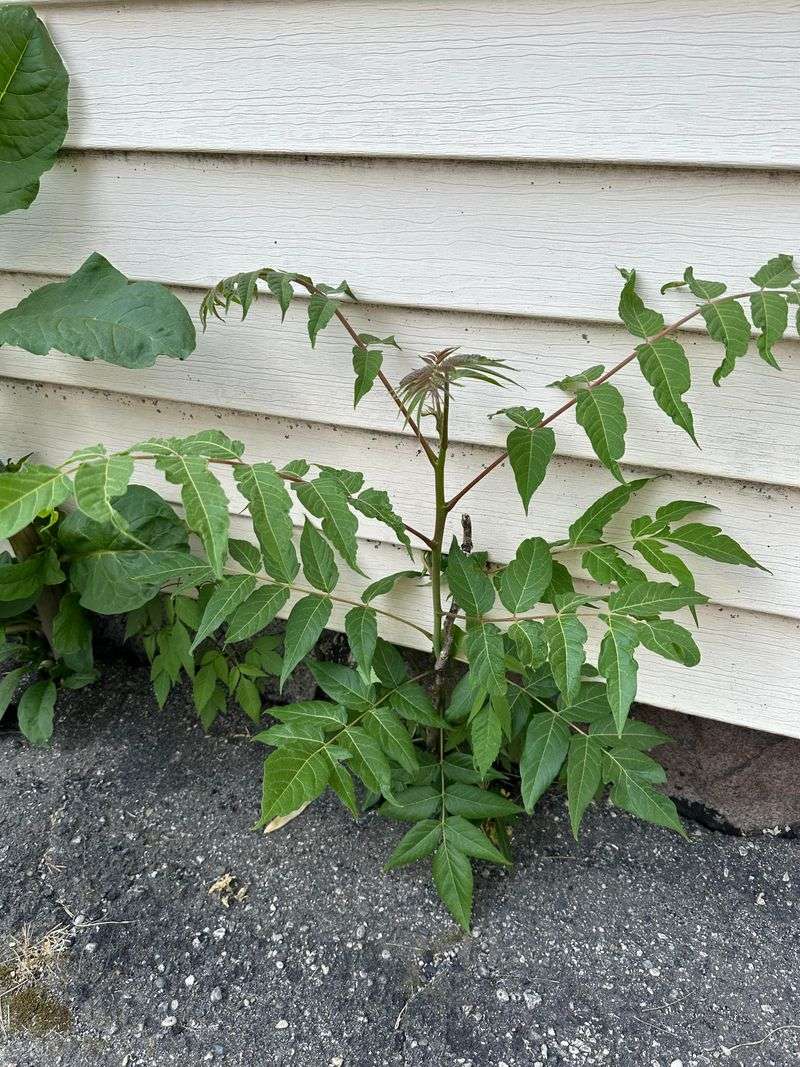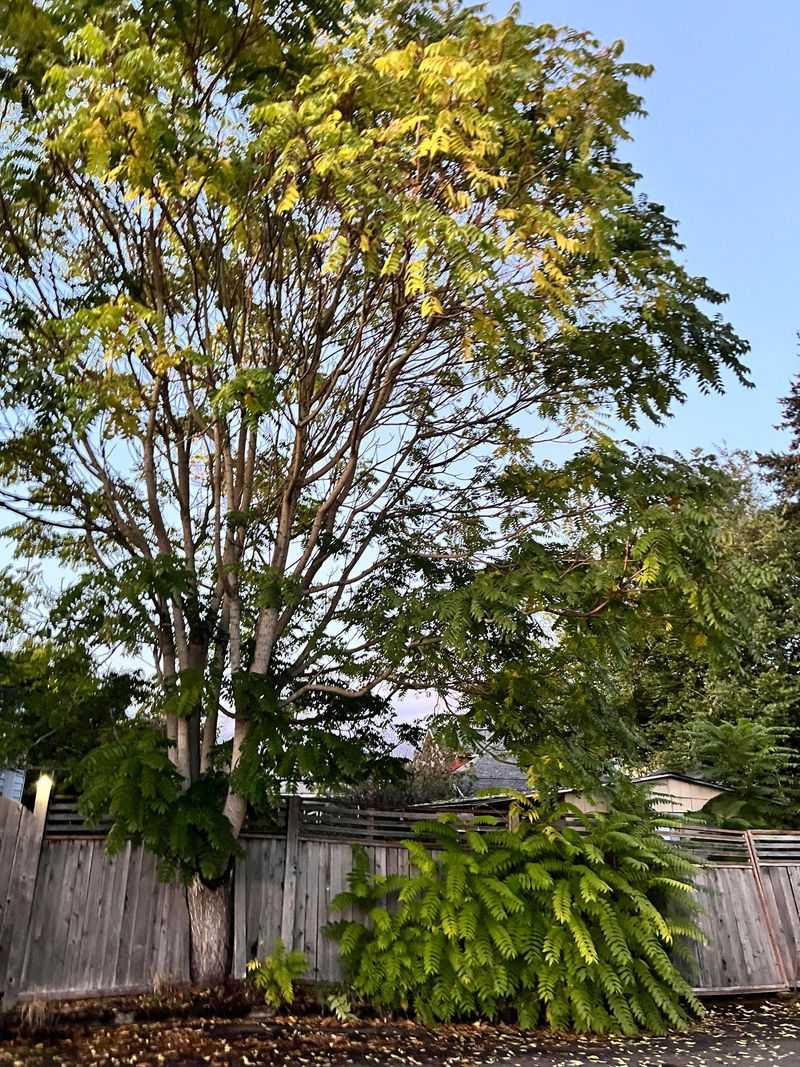Lanternflies are getting more attention as they push closer to California, and for good reason. Once they settle into an area, they multiply fast, damage crops, and are difficult to control. But they don’t spread randomly across landscapes.
Their success usually traces back to one specific host that helps them feed, reproduce, and move into new territory. When this tree shows up along roadsides, vacant lots, riparian areas, and suburban edges, it acts like a welcome mat for the insects.
And unfortunately, California has plenty of it. The plant making it easier for lanternflies to get established is the tree of heaven.
1. Originally From Asia, Not California
The Tree of Heaven traveled thousands of miles before reaching California’s shores. Native to China and Taiwan, this fast-growing species arrived in North America during the 1700s as an ornamental plant.
Gardeners loved its quick growth and tropical appearance. Unfortunately, nobody predicted how aggressively it would spread across the continent.
Now it grows wild throughout California, crowding out native plants and creating perfect conditions for lanternfly infestations to thrive.
2. Lanternflies Prefer It Over Other Trees
Spotted lanternflies aren’t picky eaters, but they absolutely love the Tree of Heaven. Female lanternflies specifically choose this tree for laying their eggs, making it their number one breeding ground.
The tree’s sap provides essential nutrients that help lanternfly nymphs grow stronger and healthier. Scientists believe the insects evolved alongside this tree in Asia for thousands of years.
This special relationship means more Trees of Heaven equals more lanternflies spreading across California neighborhoods.
3. Grows Incredibly Fast And Spreads Easily
Few trees can match the Tree of Heaven’s explosive growth rate. A single seedling can shoot up to 12 feet in just one year, quickly dominating any area it invades.
Each mature tree produces thousands of winged seeds that float on the breeze for miles. The roots also send up new shoots, creating entire groves from one original tree.
This aggressive spreading makes it nearly impossible to control without dedicated removal efforts throughout affected communities.
4. Releases Chemicals That Kill Nearby Plants
Nature gave this invasive species a secret weapon called allelopathy. The Tree of Heaven releases toxic chemicals from its roots, leaves, and bark that poison the soil around it.
Native California plants struggle to survive in this contaminated ground. Gardens, wildflowers, and even young oak trees can wither when growing too close to these aggressive invaders.
By eliminating competition, the tree creates empty spaces perfect for more Trees of Heaven and their lanternfly companions to colonize.
5. Difficult To Remove Once Established
Chopping down a Tree of Heaven sounds simple, but it actually makes the problem worse. Cutting triggers the roots to send up dozens of new shoots, multiplying your headache instead of solving it.
The roots extend far underground and can survive harsh conditions for years. Even tiny root fragments left in soil can sprout into new trees.
Proper removal requires herbicide treatments, careful timing, and persistent follow-up work to prevent regrowth across multiple growing seasons.
6. Damages Buildings And Infrastructure
Beyond helping lanternflies spread, these trees cause expensive property damage throughout California cities. Their aggressive roots crack sidewalks, damage building foundations, and invade sewer lines searching for water.
The fast-growing branches shed constantly, clogging gutters and creating maintenance nightmares for homeowners. Weak wood means branches snap easily during storms, potentially damaging cars and roofs.
Municipalities spend millions annually repairing infrastructure damaged by this invasive species that keeps coming back stronger.
7. Recognizable By Its Distinct Smell
Want to identify a Tree of Heaven quickly? Just crush a leaf and take a whiff. Most people describe the smell as similar to rancid peanut butter or burnt popcorn mixed with gym socks.
This unpleasant odor comes from the same defensive chemicals the tree uses to poison surrounding soil. The smell intensifies when branches break or lawn mowers hit the trunk.
Many Californians recognize this distinctive stench before they even see the tree itself in their neighborhoods.
8. California Encourages Reporting And Removal
State officials take the Tree of Heaven threat seriously because of its role in lanternfly expansion. California’s Department of Food and Agriculture encourages residents to report sightings through online portals and hotlines.
Many counties offer free identification guides and removal workshops to help communities fight back. Some programs even provide herbicide assistance for property owners tackling large infestations.
Early detection and quick action remain the best strategies for preventing these trees from creating more lanternfly breeding grounds.


